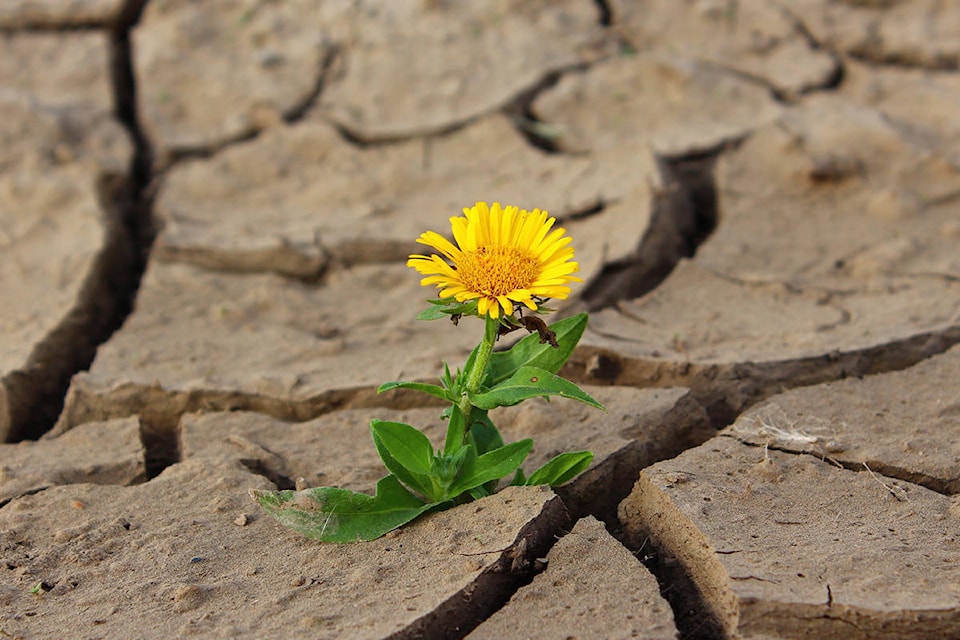Lindsay Telfer, national project director for the Canadian Freshwater Alliance visited Vancouver Island on June 26 to speak about an issue that impacts all B.C. residents: drought.
Many Vancouver Island communities have enacted water restrictions. The Cowichan Valley Regional District is in drought level three with stage 2 water restrictions. The Town of Ladysmith enforced stage 3 water restrictions on June 21. Telfer says that this is the new normal.
“The current levels of drought so early in the season, and the forest fires that we’re seeing very early in the season are unprecedented. That is raising some concern and alarm bells,” she said.
B.C. and parts of Alberta are the most drought stricken areas in Canada, however they are part of a continental pattern of unprecedented dryness along the west coast of North America.
RELATED: It’s spring, but B.C. is sounding the alarm on drought
“There’s some significant concern about the trend upward,” Telfer said. “It’s what we would call the 100-year drought, but we’re seeing them much more frequently than 100 years.”
Telfer said that the challenges are related directly to climate change. She expects these challenges will continue and that communities need to begin building resiliency to drought now or risk severe consequences later.
“We have to be protective, and we have to ensure that we’re leaving enough water in our rivers to be able to sustain the ongoing challenges… We’re going to see fluctuations over the next decade plus, then higher levels of drought. And every year, it could arguably get worse if we’re not replenishing the waterways,” Teller said.
During times of drought, some communities turn from surface water to ground water sources. Telfer warns that ground water and surface water are connected, and likened drawing water from underground reserves to drawing from a blind bank account.
“You won’t know there’s no more until there’s no more, so we need to be cautious about our over-reliance on any ground water,” she said.
Telfer and the Freshwater Alliance have a few core suggestions when it comes to water conservation efforts.
“We would like to see the B.C. government uphold their leadership ability to make decisions surrounding their home waters. This means delegating authority and responsibility to the communities who are most impacted,” Telfer said.
“We would also like to see the legal safe guarding of water flows. The reason we’re calling for that is we need to ensure water stays in our rivers during periods of drought because they are drying up.”
RELATED: Drought fears high, Cowichan Lake already at August lows
She also suggested the idea of a water wealth fund that would go toward funding conservation groups, and create a plan that would help communities respond to ongoing drought conditions.
On the individual level, Telfer says that people need to become more conscious about their water usage.
“We take water for granted. Most of us, even if we live in drought stricken regions, still have water when we turn on the tap. And that’s great, but it also perpetuates this notion we can take our water for granted,” she said.
Along with evaluating individual water usage, Telfer suggests that people donate to existing conservation and water stewardship organizations in their community. She also said the best way to feel connected to water is to go out and enjoy the lakes and rivers themselves.
“I really believe that we protect what we love, and when we’re out exploring our creeks, rivers, and lakes, that we love them and we’re more likely to rally around their protection,” Telfer said.
The biggest risk is that the drought stricken bodies of water to dry up in the future. The consequences of such extreme would be far reaching on many aspects of daily life, including industry, recreation, safety, and sanitation.
“It is not hyperbole to say we can’t live without water,” Telfor said. “That’s an extreme end of the spectrum, but it’s not too out there, and many of our communities are on the cusp of seeing their lakes, rivers, and streams dry up.”
